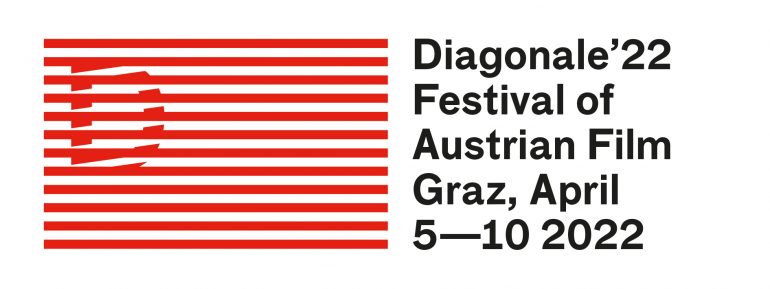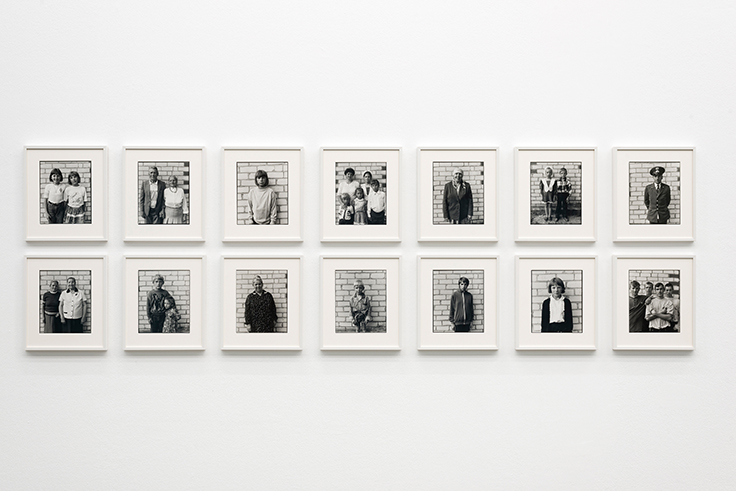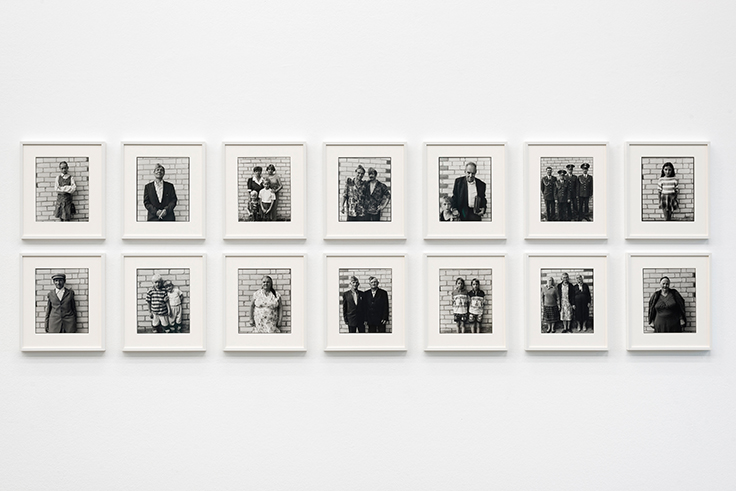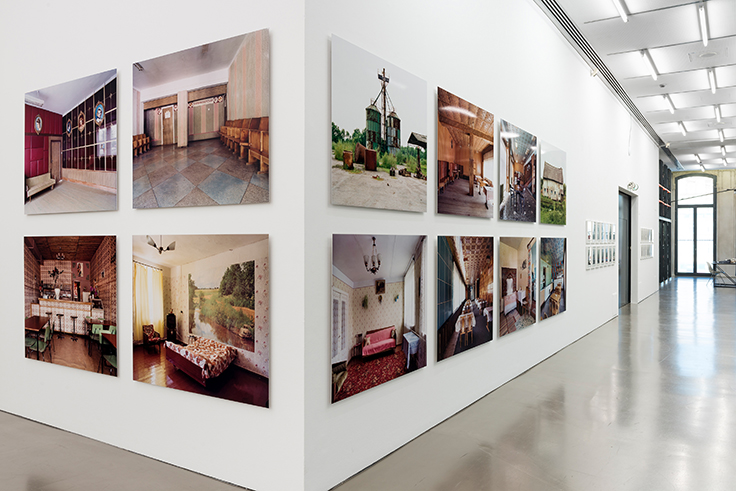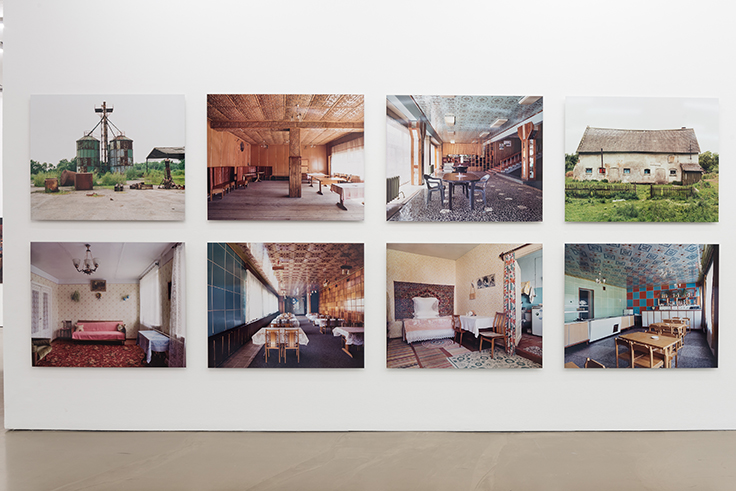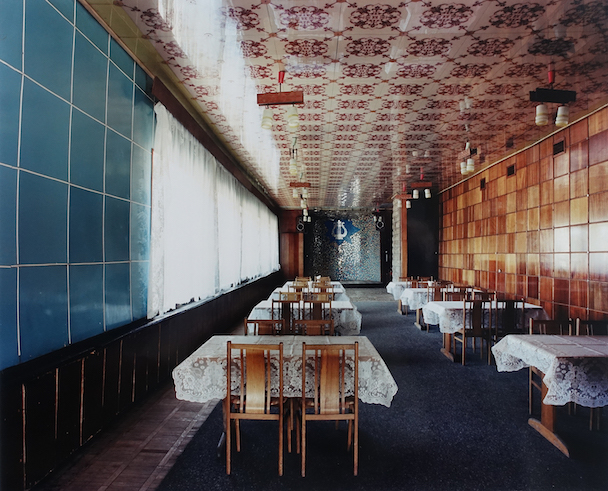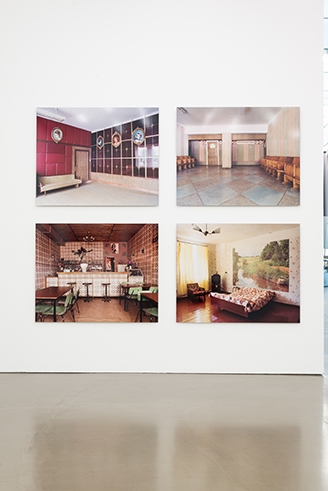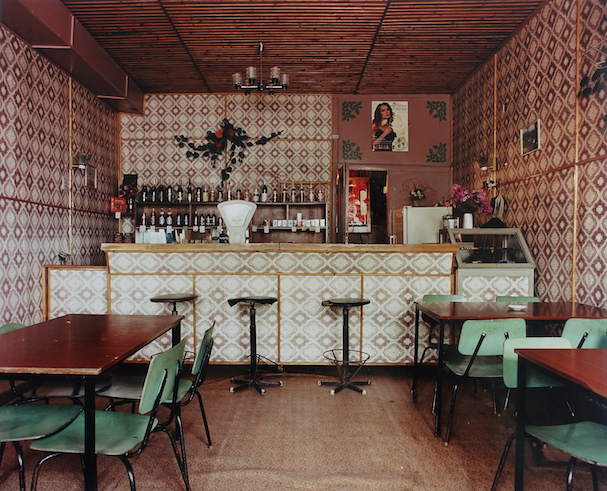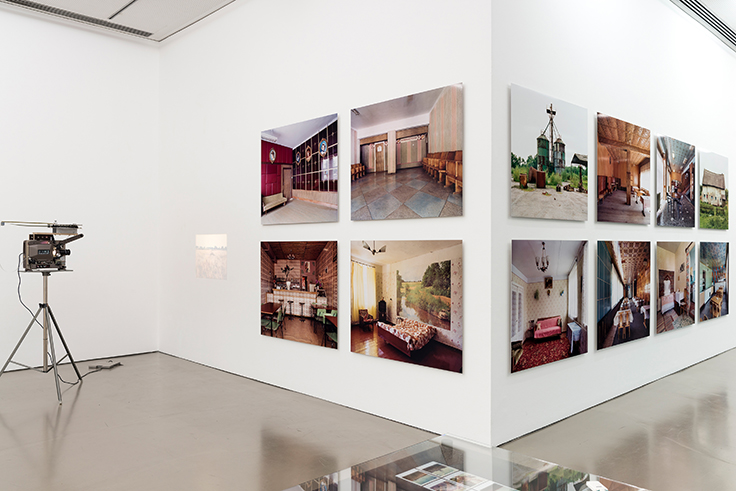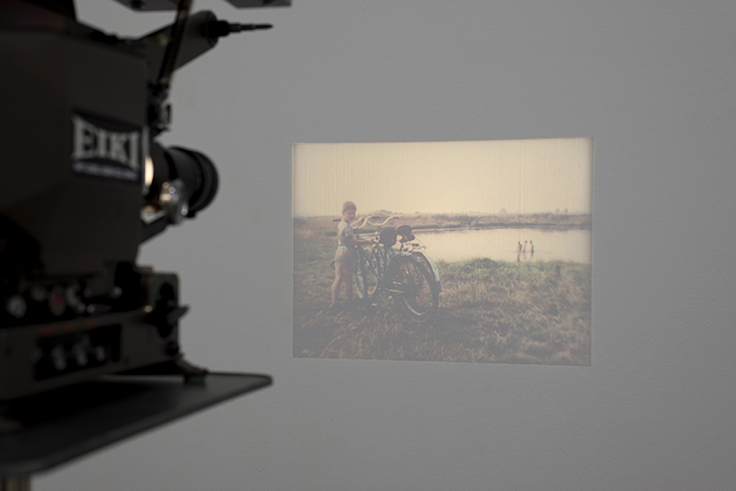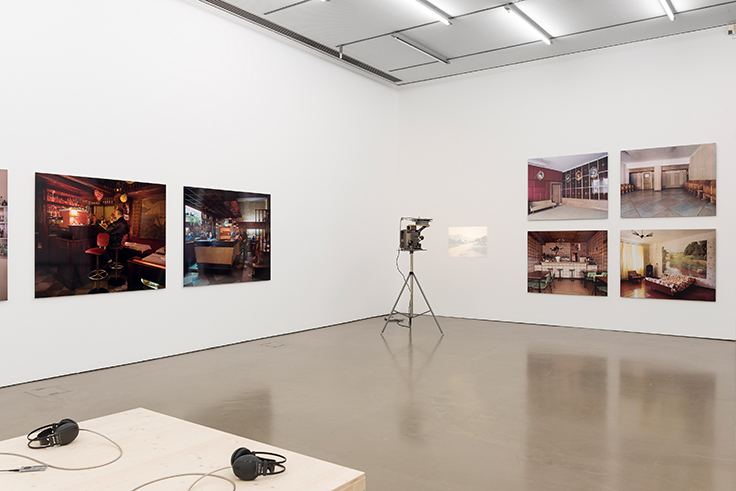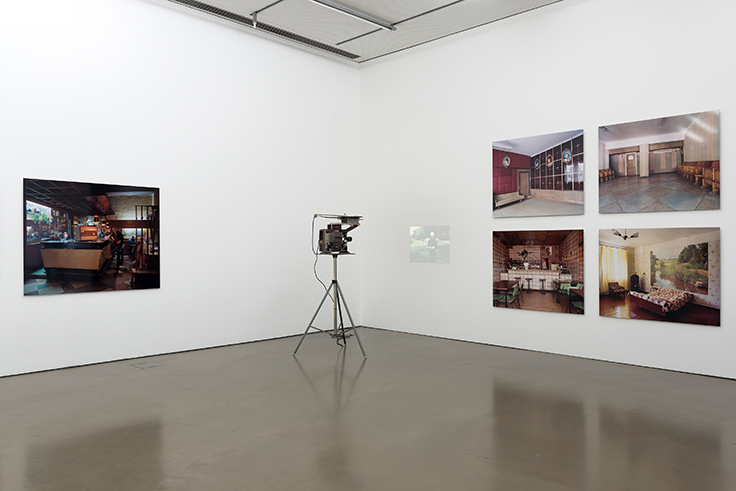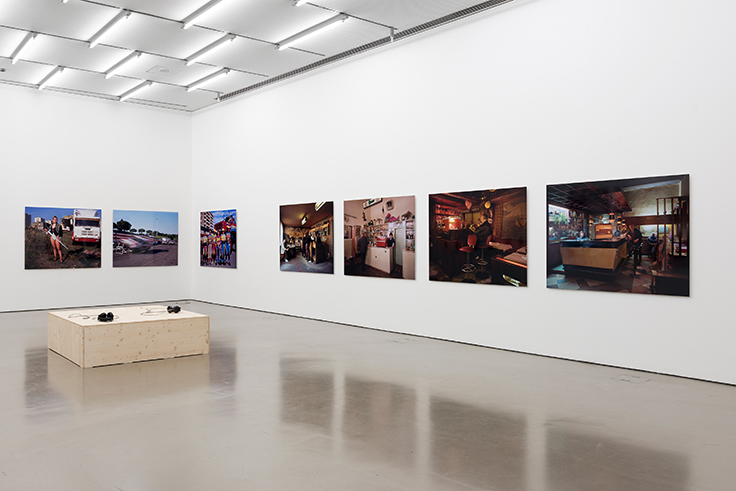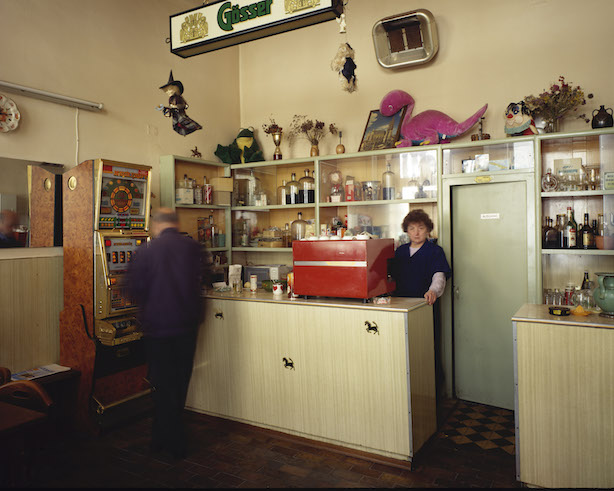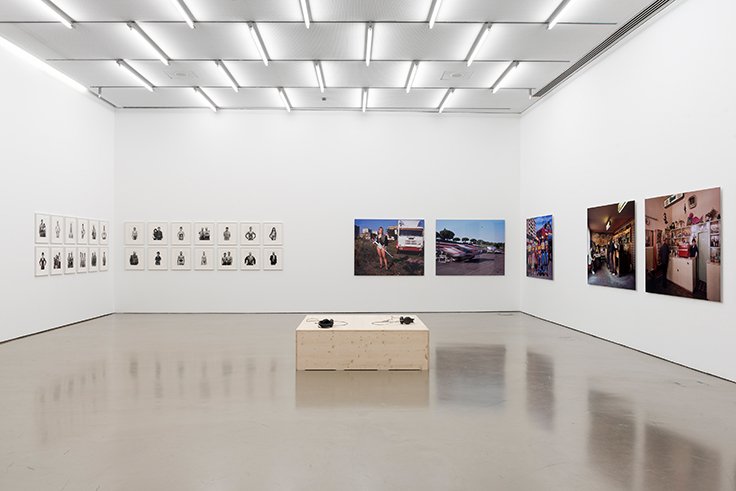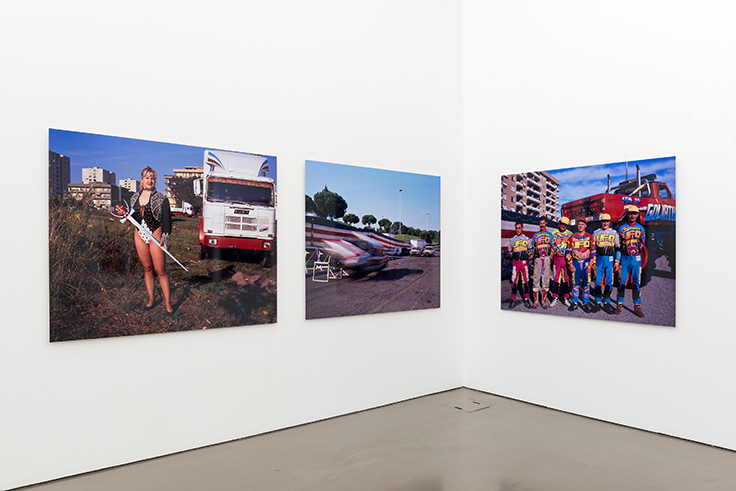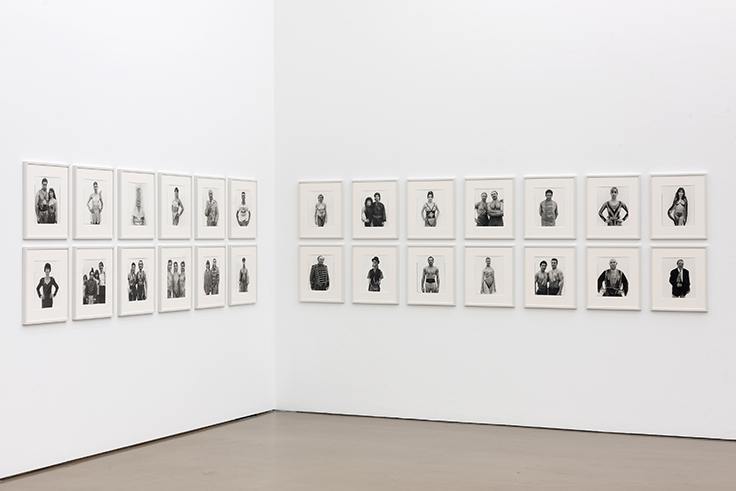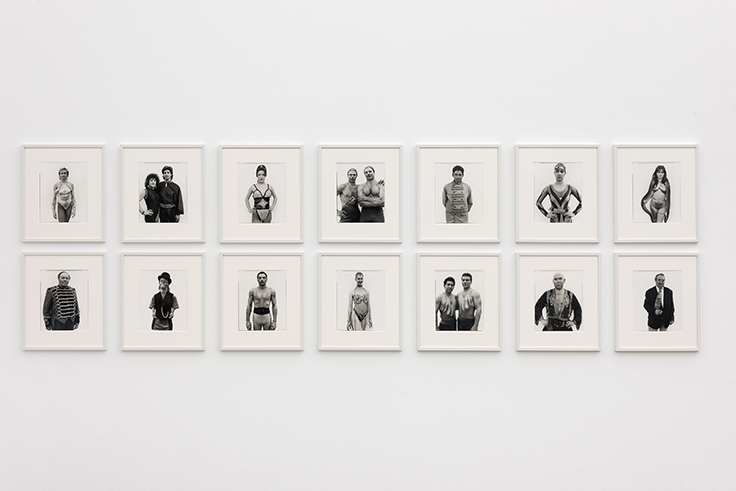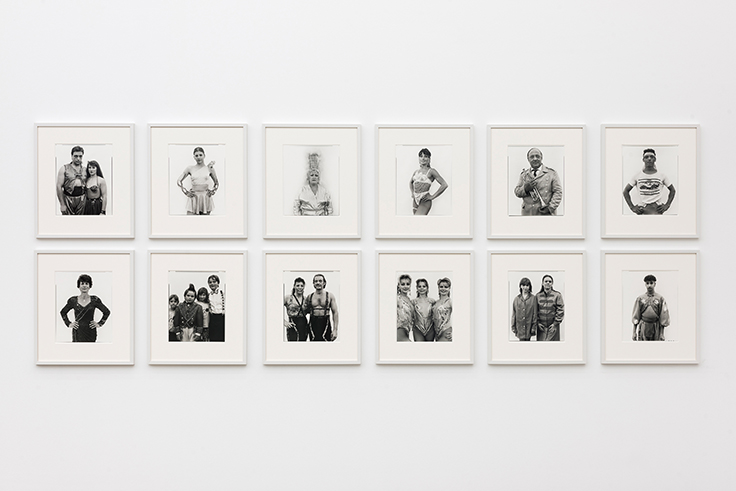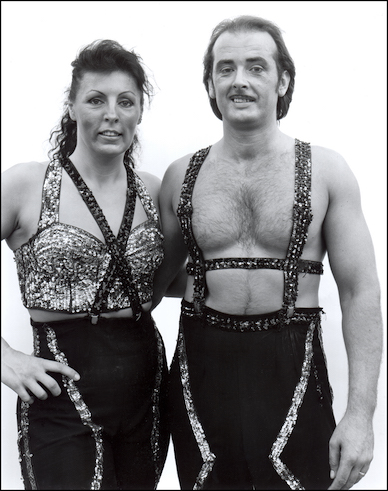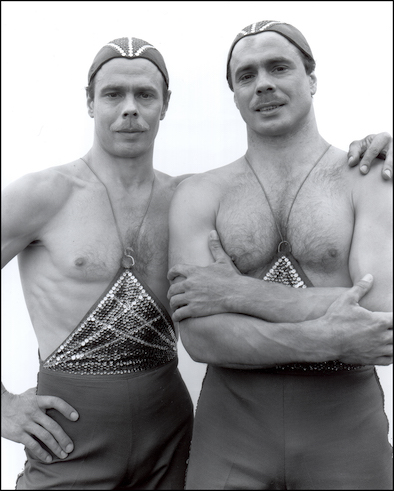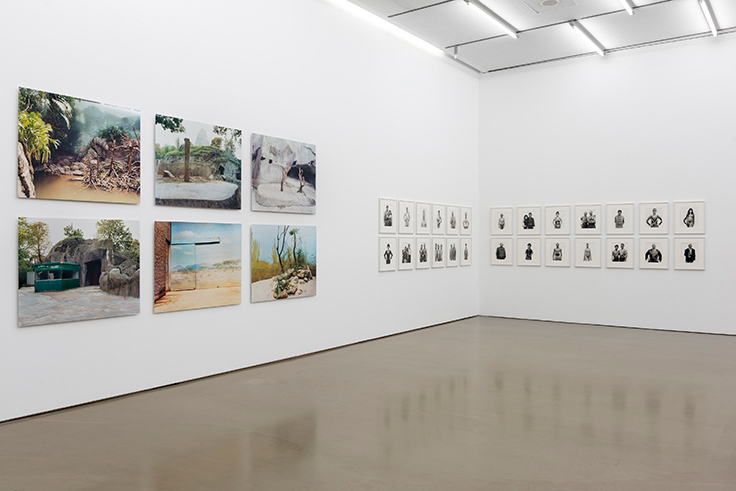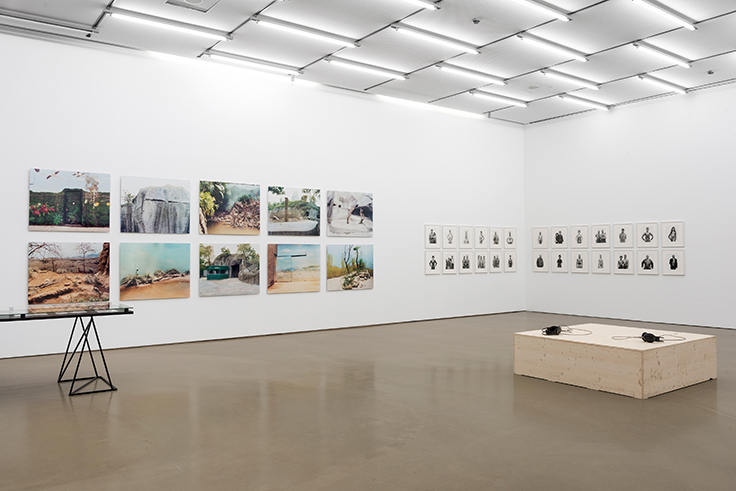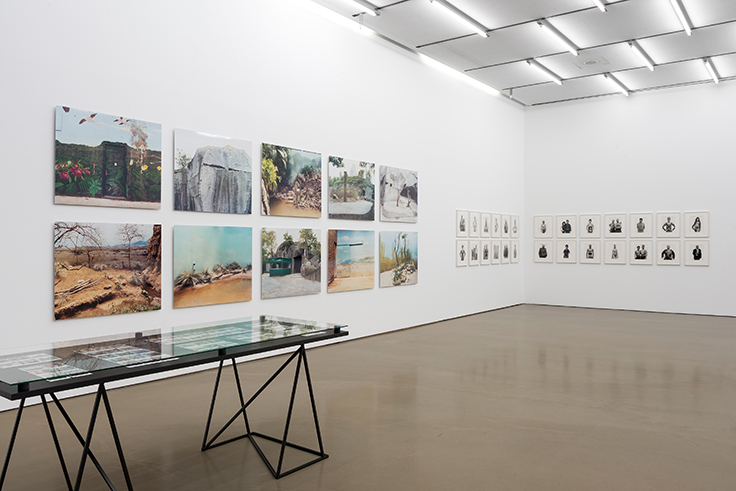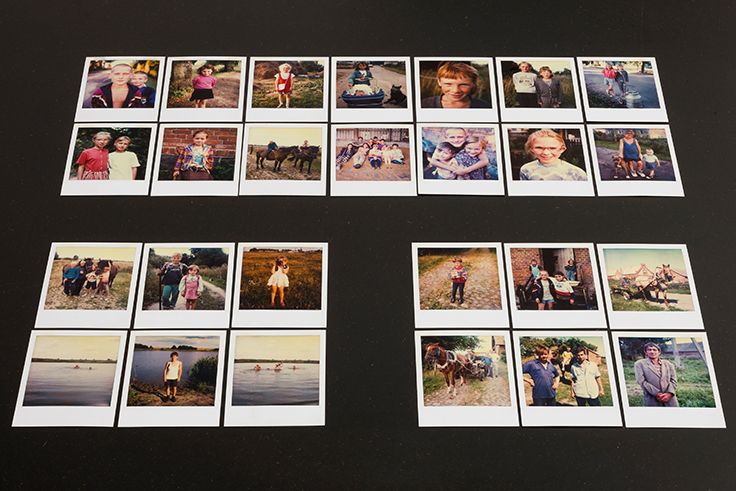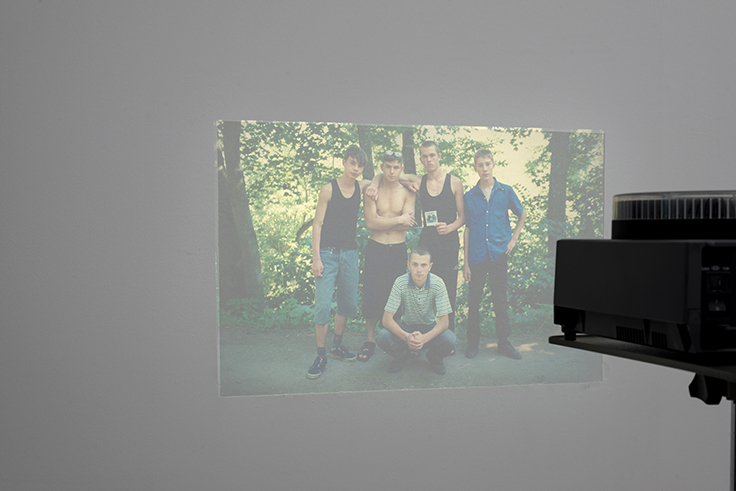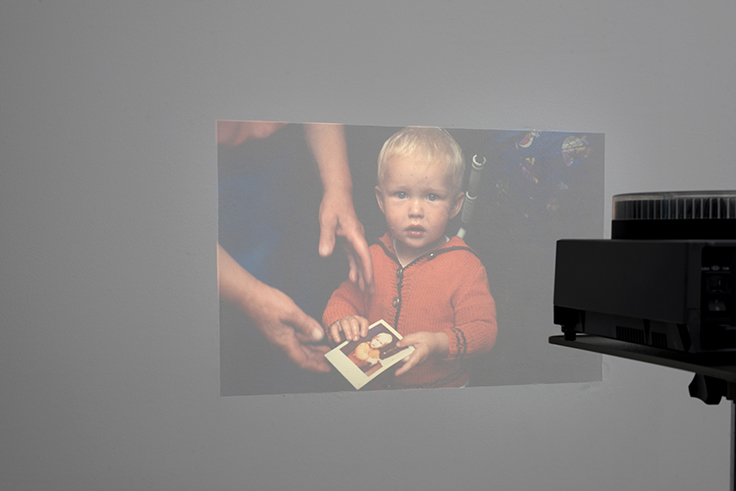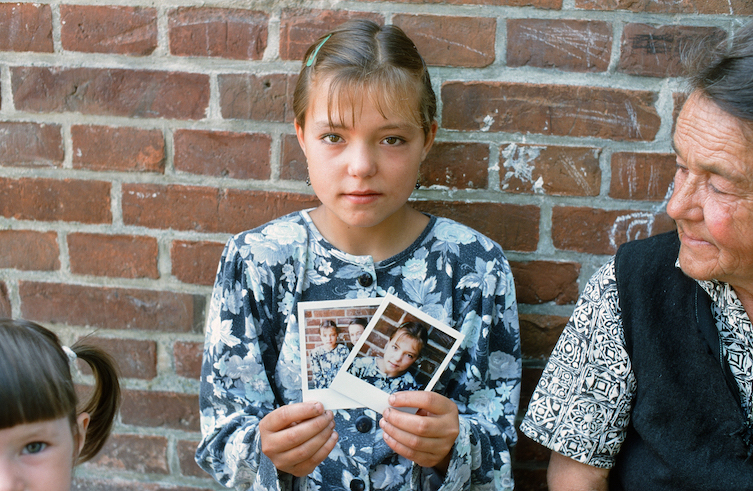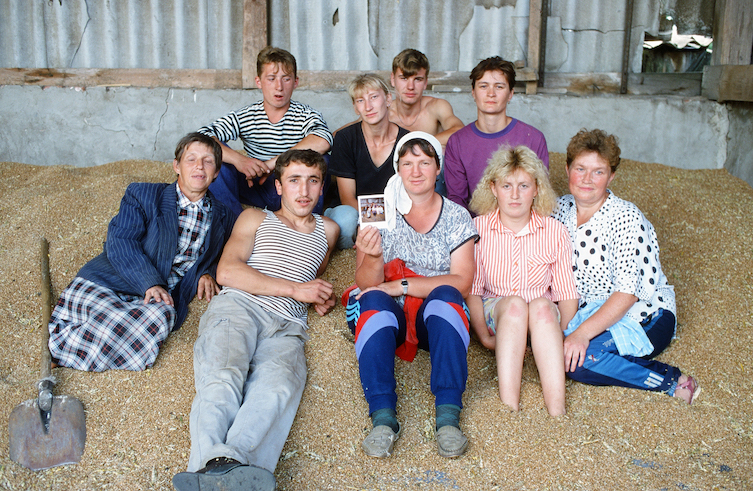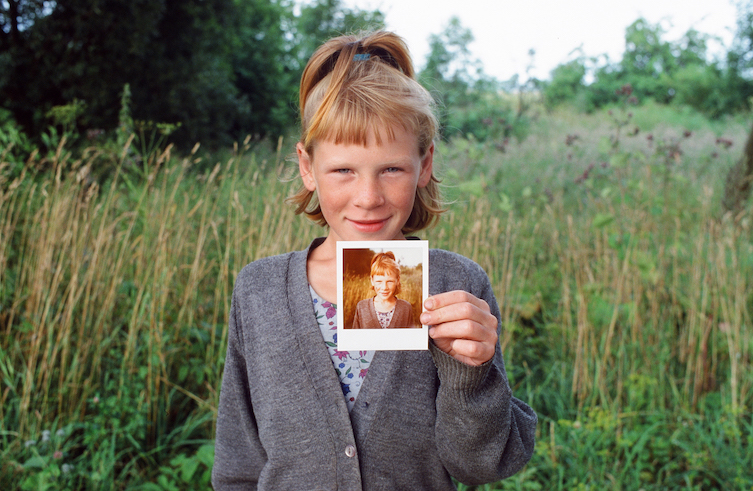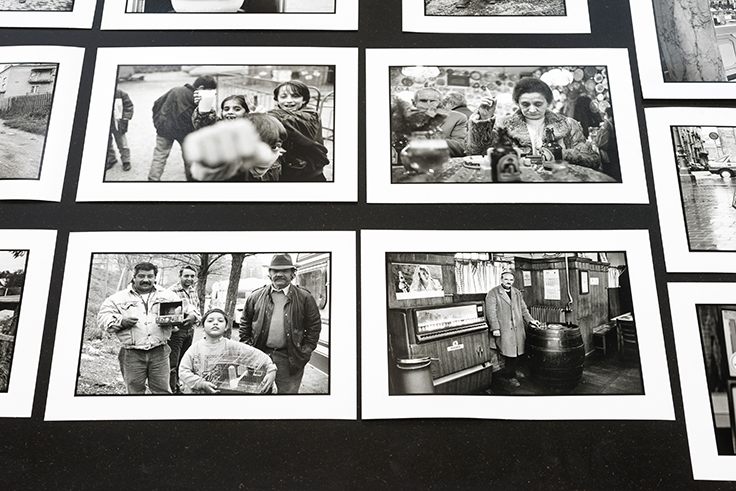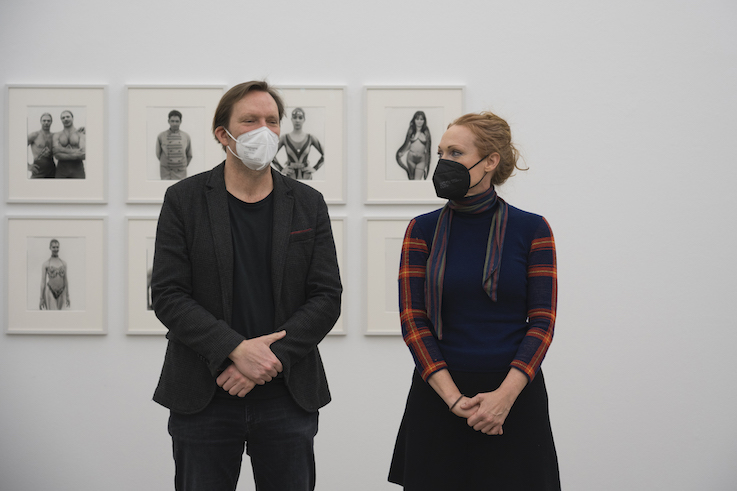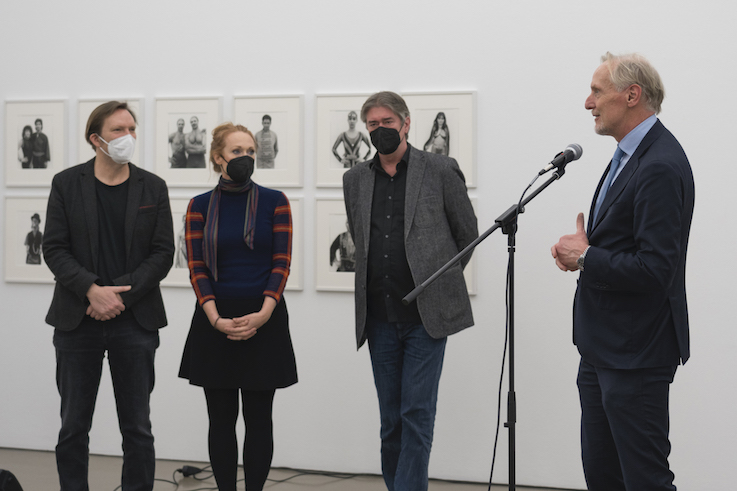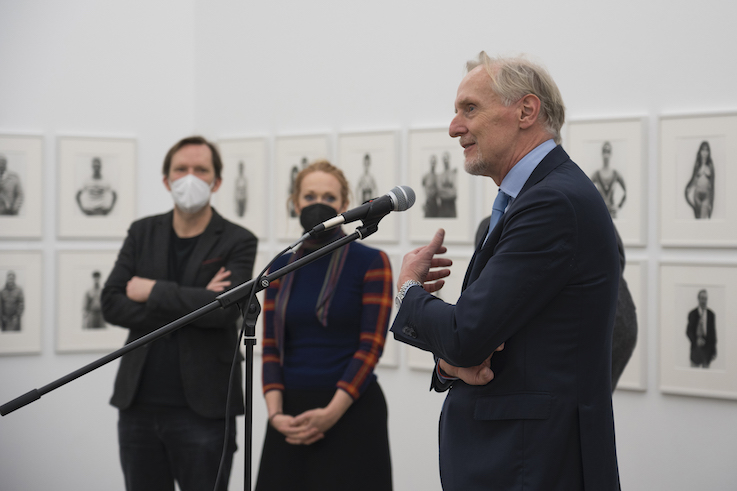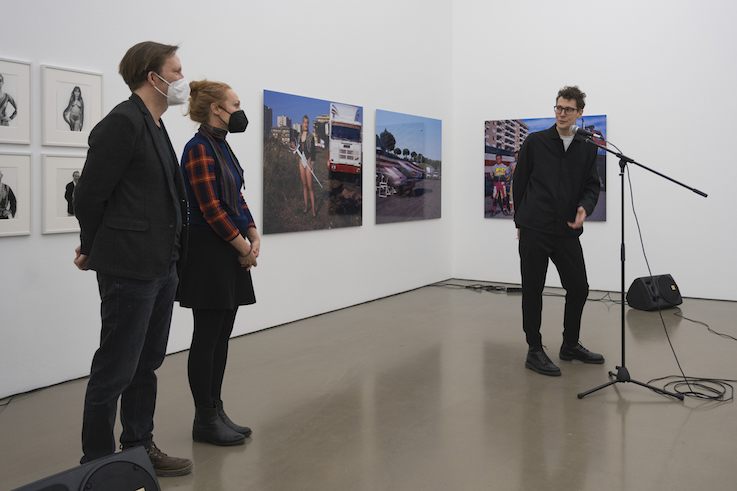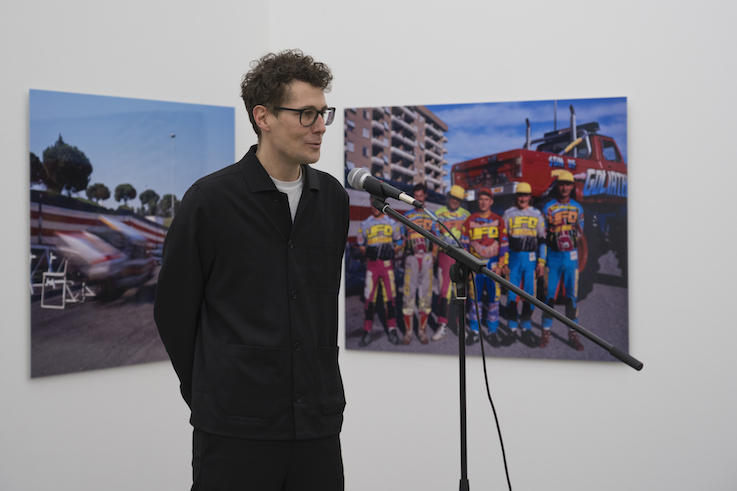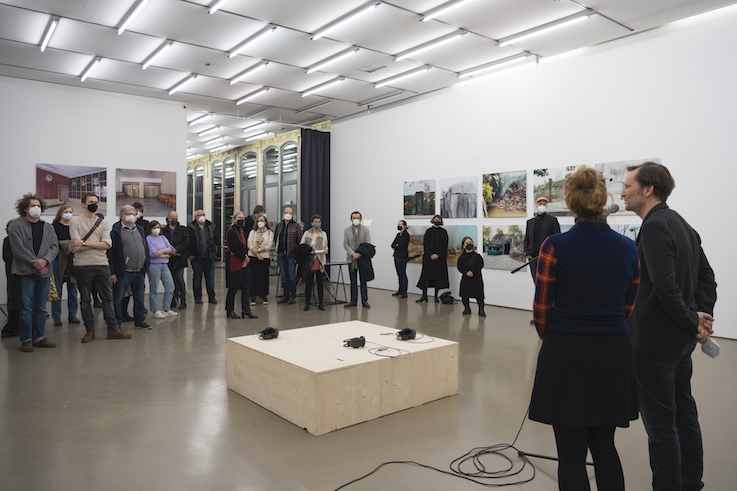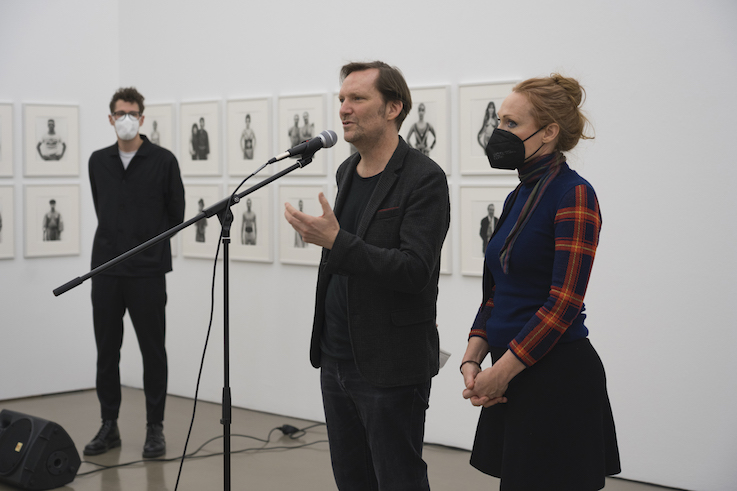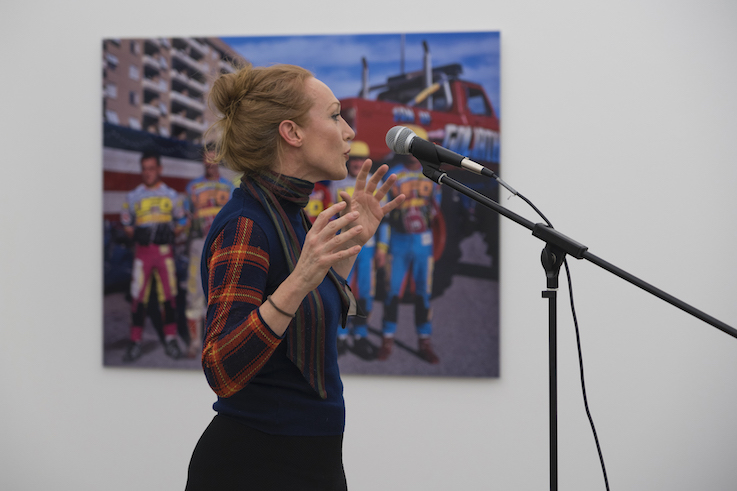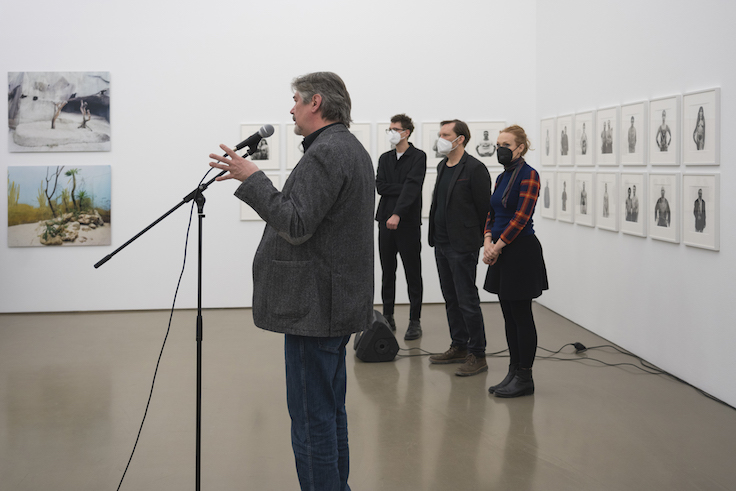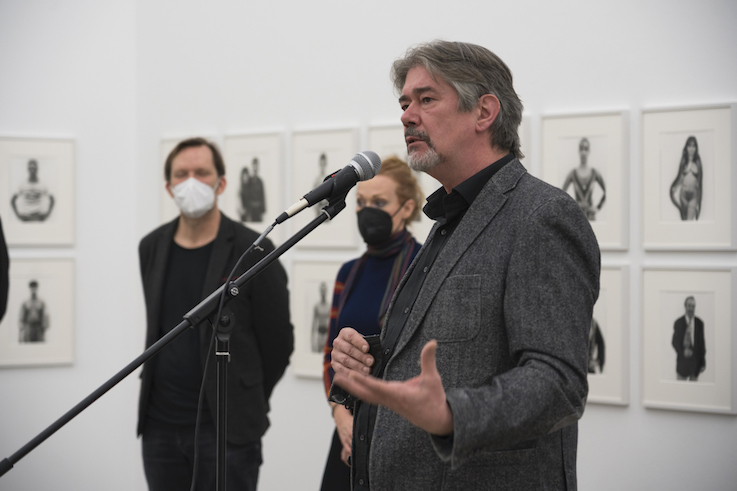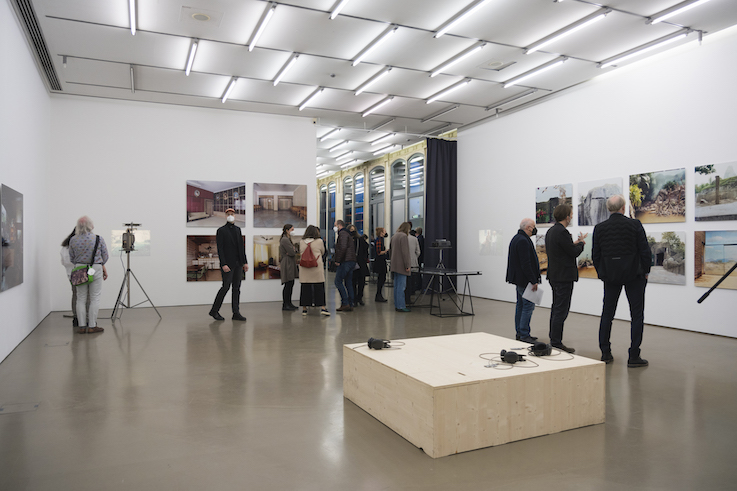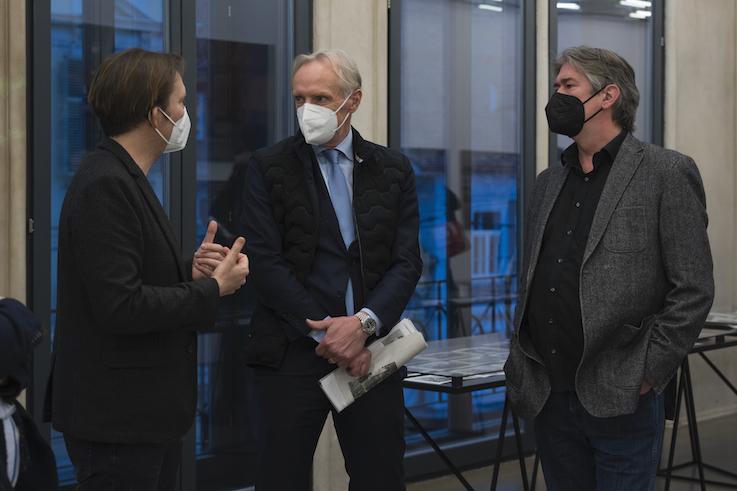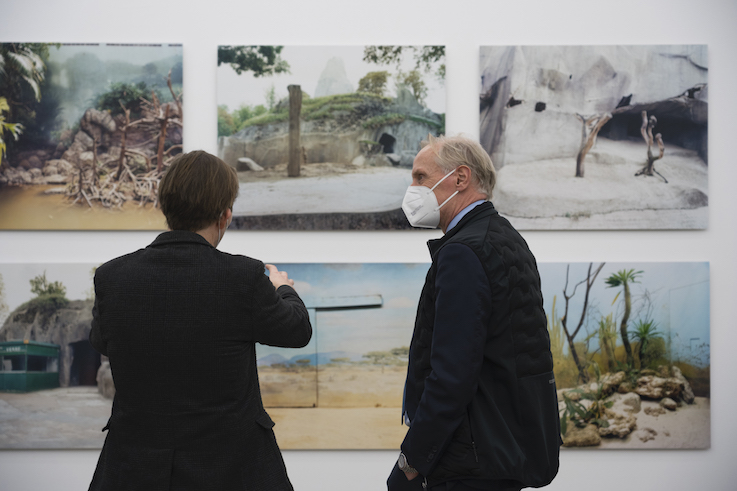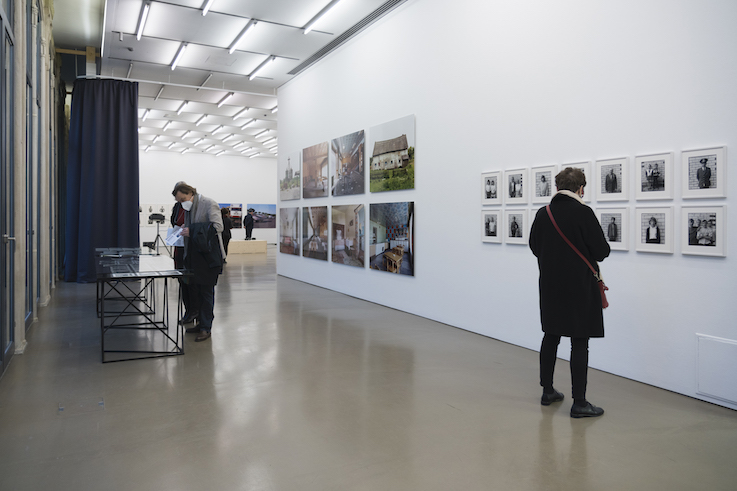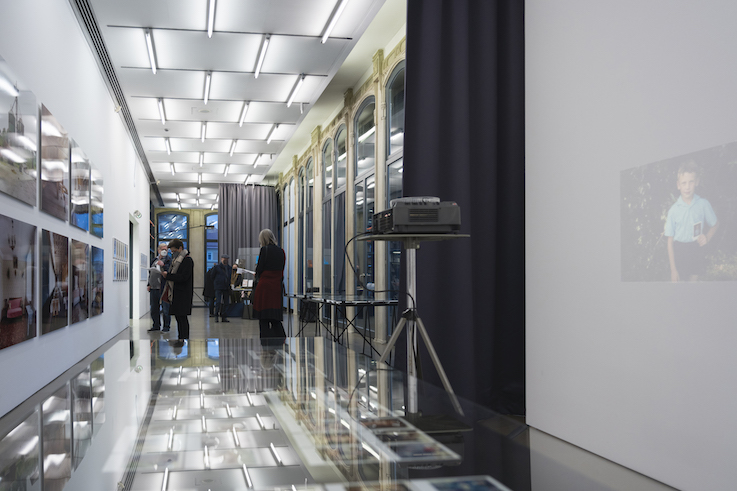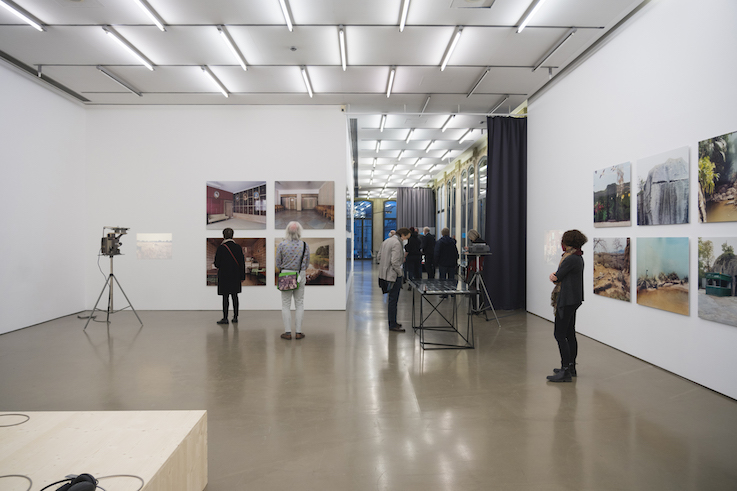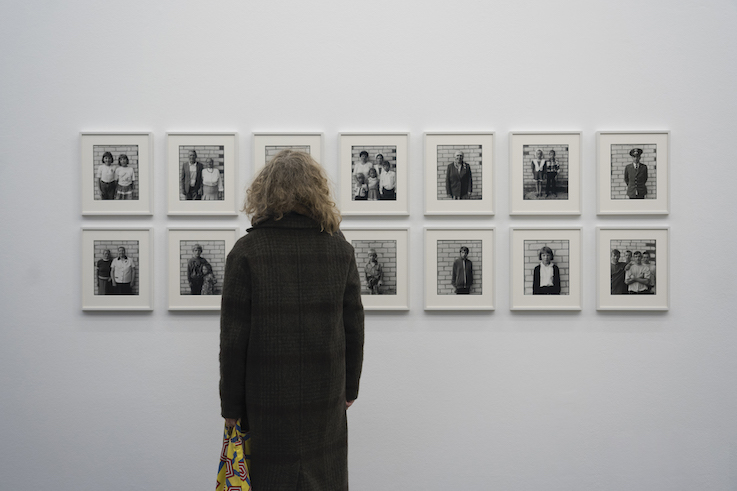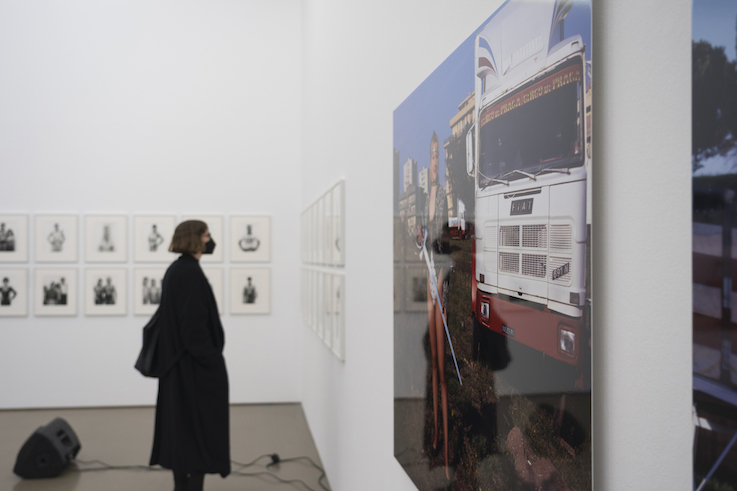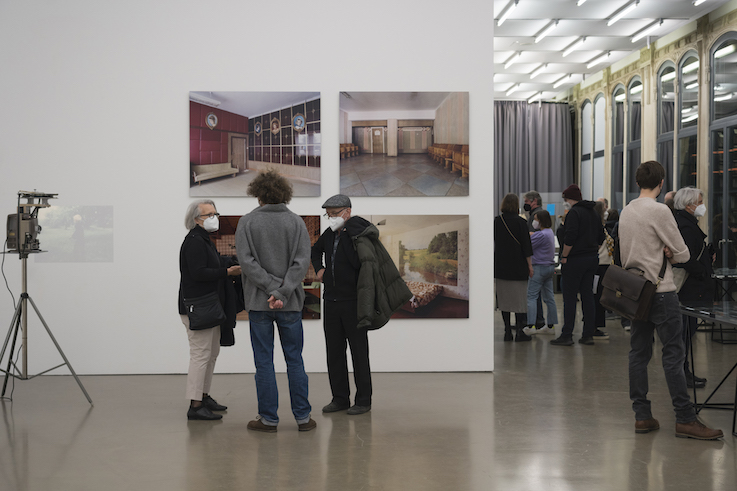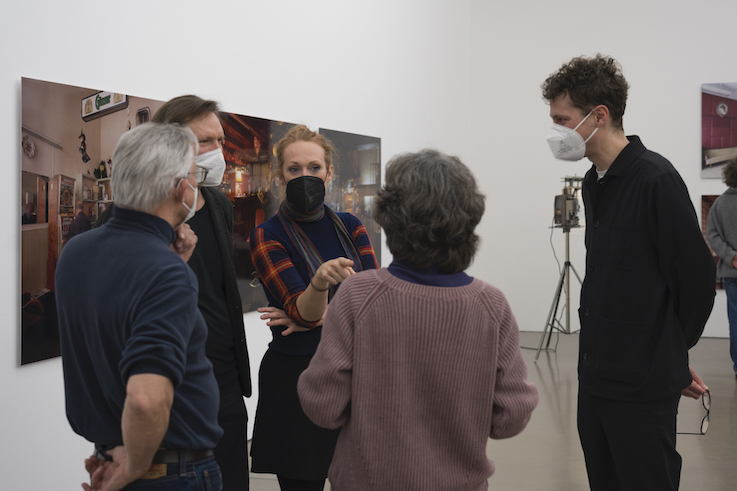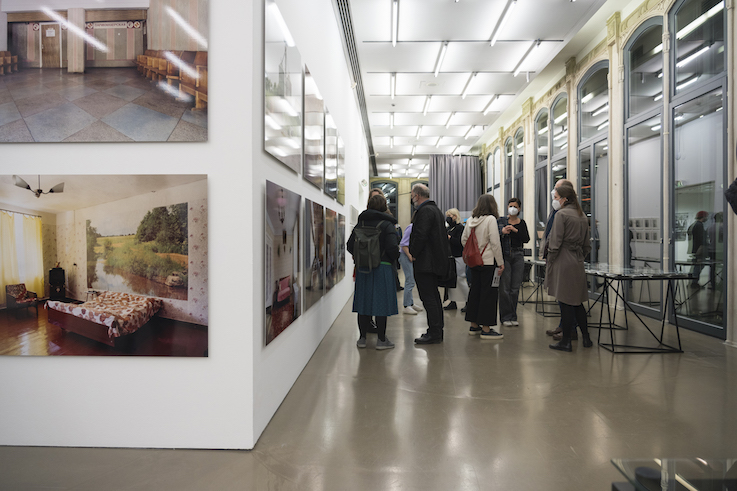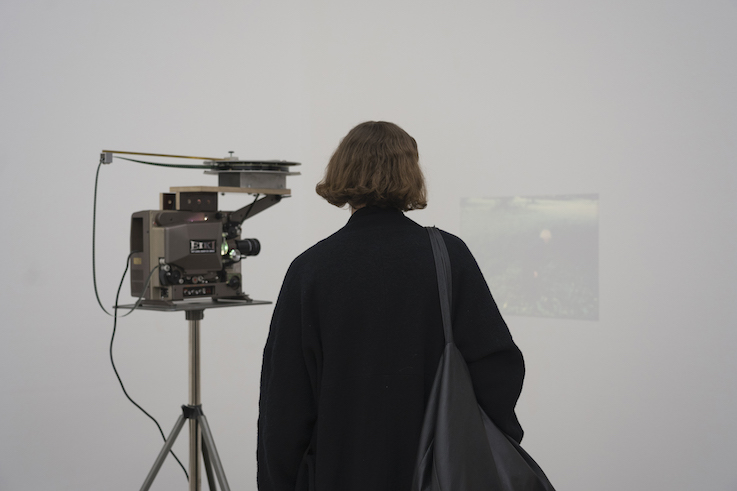Tizza Covi & Rainer Frimmel
On the Margins
Infos
Opening
18.3.2022, 18:00
Artists talk
9.4.2022, 1 pm
Duration
19.3.–22.5.2022
Opening hours
Di – So und an Feiertagen
10:00 – 18:00
Closed on
27.4.2022
Guided tours
German, English, Slowenian
Free, on request:
exhibitions@camera-austria.at
+43 316 81555016
Curated by
Reinhard Braun
Co-produced by
Diagonale–Festival of Austrian Film
In the section “Materials” you find conversations with proagonists related to the works in the exhibition to listen to.
Intro
The films by Vienna’s director duo Tizza Covi and Rainer Frimmel count among the most fascinating and sensuous works of recent Austrian film history. They are shown at international film festivals and have received numerous awards. At once social realistic and poetic, the films are compelling not least due to their tender treatment of and affection for their protagonists, sometimes played by amateurs. Less well known is the photographic oeuvre of Covi and Frimmel. While these photographs may be considered a preliminary study for the duo’s films, they must also be seen as independent perspectives and artistic concepts—though analogue film and photo materials represent a parallel use.
In images that are at once concise and gentle, Tizza Covi and Rainer Frimmel’s photographs make photography the scene of a special cooperation between the artists and their protagonists. Through their method, the filmmakers do not only allow us to enter into an entirely different relationship to what we are used to understand as the fringes of society, but also to rethink the ideas about our society from the perspective of these fringes.
The Diagonale has dedicated the extensive film program “Spotlight on” to Tizza Covi and Rainer Frimmel, which will be presented from April 6 to 10, 2022, and Camera Austria presents a first comprehensive exhibition of their photographic work. This joint endeavor is the first sweeping presentation of Tizza Covi and Rainer Frimmel’s oeuvre.
Tizza Covi, born in Bolzano (IT) in 1971, and Rainer Frimmel, born in Vienna (AT) in 1971, both attended the Kolleg für Fotografie at the Graphische Lehranstalt in Vienna from 1992 to 1994. They have been collaborating since 1996 on projects in the fields of photography, theater, and film. They established the production company Vento Film in 2002 in order to produce their films independently. Their documentary and feature films, which are always cast with amateur actors and shot on 16mm film, have been awarded prizes at many international festivals.
Read more →Tizza Covi & Rainer Frimmel
On the Margins
“A society receives its characteristic imprint at the margins. And the history of these margins is a political history, but it also suffuses and in-forms the realm of aesthetic form and the syntax of orderly language,” Anselm Franke wrote in a contribution to the magazine Camera Austria International No. 135 in 2016. The formation of our contemporary societies is characterized by practices of exclusion and division. But societies never manage to keep what is excluded or displaced entirely outside of their conventions or norms; it forces its way back into the alleged center of society in images or in the language. At times, it is also assigned a role as a sort of heterotopic space of exception, which is supposed to be proved by the rule. Like, for instance, the world of the circus. Since preparing and doing research over many years for their film Babooska (2005), Tizza Covi and Rainer Frimmel have involved themselves again and again in this social milieu at risk of disappearing (La Pivellina, 2009; Mister Universo, 2016). The nomadic lifestyle makes it impossible to become part of the world of “sedentary society,” to live in a stable social environment characterized by repetition and continuity. Being constantly on the road and living in caravans does not allow for continuous school education, and also further reduces the possibility to find housing through having a job. Working in the circus—on or behind the stage—therefore represents basically the only employment opportunity. Circus people, however, disparagingly call sedentary individuals “gadschis.” “For people who live an itinerant life, we sedentary individuals are something of an object of derision and malice and are usually perceived as being not quite all there,” Tizza Covi says. The different social roles are thus characterized by odd, reciprocal exclusions, prejudices, and unfamiliarity, and/or also by a mutual not-wanting-to-know.
With their films based on the circus milieu and their photo series, Covi and Frimmel work against this not-wanting-to-know. Their focus is thus not on what can be seen of the circus—the arena, the acrobatics, the animal trainers, and other numbers—but rather on what usually cannot or does not want to be seen—day-to-day life, family relationships, the routines of setting up and taking down the tent and caravans, the constant registering for and deregistering from schools. In 2000, in cooperation with the foto-forum Bozen, they published the book Es ist wie es ist (It Is What It Is), with portraits of artists and employees of Italian and Austrian circuses produced between 1996 and 1998. Photographed in austere black and white, these portraits do not adhere to any strict documentary form and instead call to mind the portraits in August Sander’s Menschen des 20. Jahrhunderts (People of the 20th Century), but without pursuing a similar social classification. The impression that arises is that these portraits are trying to work out something that usually disappears from photographs of the circus milieu. The presence of the individuals portrayed works against any sort of typification and gives rise to an individuality and subjectivity where clichés and generalizations otherwise predominate. The great degree of visibility that these portraits produce is also possibly connected to the fact that the individuals portrayed belong to a milieu that is at risk of disappearing entirely and is supposed to be quasi transposed to the present once again with the help of photography.
The portrait is definitely one of the preferred “genres” in Covi and Frimmel’s photographic work. This is surely connected to their general interest in people and their stories, as also characterizes their films. But it also has to do with their passion for the documentary, which is, however, not oriented toward an abstract concept of the social, but instead always toward concrete constellations of individuals, their relationships, conflicts, and affiliations—constellations that are, however, found particularly at the margins of society, that are alien, unfamiliar. At the same time, the documentary also represents a controversial form of visual practice, yet one that must also always pose the question of whose perception generates which narrative, and what questions regarding power, possibilities, access, and privileges are connected with this.
Covi and Frimmel react to this form of a view “from the outside” by, to some extent, developing a position of being inside, frequently through preparations on site over many years. This is, however, a position about which they simultaneously know that it can never be assumed completely and definitely should not be romanticized as participatory observation. While filming, they themselves nevertheless live in a caravan, and deal with tasks and share day-to-day life with their protagonists.
The film Das ist alles (That’s All)—which was filmed in the village of Yasnaya Polyana in Kaliningrad Oblast, a narrow strip of Russia between the Lithuanian and Polish borders that became a gathering place for displaced, resettled, and homeless persons over the course of the unsettled history of Russia—was released in 2001. Covi and Frimmel lived in this village for a total of three months in order to accompany “ways and views of life that are totally alien and very close to us at the same time.” “It was clear to us from the very beginning that it is a fragmentary observation, without journalistic aspirations” (Tizza Covi).
In addition to this, they also produced an extensive photographic series of interior spaces, numerous portraits, and Polaroids in 1998 and 1999. The interior spaces, public and private, are deserted. They do not serve to characterize the inhabitants of this village in greater detail, to inscribe them in a space surrounding the individuals that we can also “read,” in order to—yes, in order to do what? To understand them better? To be able to know more? The empty interior spaces seem to visualize this missing knowledge for us. What social life do we imagine in the public spaces? What sort of family life in the private spaces? These deserted spaces seem to tell more about distance, about alienness and being different, than many (well-intended) social reportages—a distance that we are only able to bridge with difficulty and to which we grant ever less presence in the space of a shared present.
One black-and-white series in turn consists of portraits and group portraits, all captured in front of the same wall, some as full body shots, others cut off at the hip. Families, siblings, and friends. They call to mind the portraits from Es ist wie es ist, with great attention to the individuals portrayed; the always-the-same background has an artificial quality, but simultaneously also a unifying aspect, because social hierarchies are thus consequently concealed. Without surroundings or context, these portraits are also unable to trigger any stereotypical approaches to reading them, which already attribute a status and role to the individuals.
A second series in color shows in part the same individuals, as they respectively hold up a Polaroid with their portrait to the camera—on the street, in the garden, in front of their house, in the field, while bathing, in the stall, milking cows, with horses. This series expands our visual “access” to their life and/or to this brief detail from their life. But these pictures also “talk” back. The individuals portrayed show us a picture of themselves in a picture of themselves. What might seem to be a simple gimmick has far-reaching implications. By means of the gesture of showing, the individuals portrayed are given a role in the creation of the picture; they are to some extent co-authors. And with this gesture of presenting a picture, they show us that we can only know something about them based on a picture, fleeting, cutout-like, fragmentary. They show us that they are enmeshed in this concrete moment in a politics of representation, but a politics to which they are not subservient, but in which they take on an active role. For a brief moment, they allow this politics of representation to share in their life.
If it can thus be said critically about documentarisms, that they are about an appropriation, and also about a boundary that can often only be crossed in one direction—in the direction of those who become the “subject” of documentary interest—then in this series, Covi and Frimmel make it possible, too, for this boundary to be crossed in the other direction, for the “subject” to respond, to be given a “voice” in this visual dialogue, which only becomes a dialogue and transcends the form of a “record” as a result of this. “That means that they are on both sides of the division, inside and outside, like mediating boundaries, specular but also reaching out to the other side . . .” (Anselm Franke).
Remaining Polaroids from Kaliningrad are presented in tabletop display cases, like the archive of a project that can never be completed, that is thus no longer at the disposal of the photographers. But it also seems to be an excess of the visual that cannot be subdued. For this reason, these series from Kaliningrad document not so much a concrete social and political space; they instead document a longer-term project in which something about pictures, in which the individuals portrayed also have a part, is negotiated. If an archive is hence what is concerned, and many things suggest this, for considering Covi and Frimmel’s projects from the perspective of an archive, then not as an archive that has developed from the fact that something remains behind and is collected. “I start with the assumption that the archive is not only a place of storage but also a place of production, where our relation to the past is materialized and where our present writes itself into the future, thus, accordingly, I understand the archive as a place of negotiation and writing” (Ines Schaber).
The interest in (social) margins, in ways of life that are disappearing or will almost never become part of history, that receive barely any or no visibility and are thus even unable to become part of our present, could all too easily give rise to the temptation to define the documentary narrowly and to comprehend it as a record, as a production of documents about a presumed reality. But representation continues to be a political “process of generating and circulating meanings . . . within a social system” (John Fiske). Covi and Frimmel seem to be quite aware of this form of power and confront it not only by taking something in their projects (in line with “taking a photograph”), but by giving something as well. This gesture is shown in the donated Polaroids, which ultimately also bear witness to the presence of the authors themselves and position their practice in the picture as well. In this respect, the photographs are not indebted to documentarism in a narrower sense, but also appear as a part of and outcome of a particular form of participation.
In a certain way, the photographic works of Covi and Frimmel are then also connected again to their films by this participative and dialogical moment, but not in an aesthetic way or in terms of a formal logic. At the same time, as a result of the protagonists’ spontaneous dialogues and actions as well as unforeseeable events, the various narratives in the films comprise something that eludes any representation designed in advance and claims a certain collaborative resistance for itself. And it is thus not primarily about making use of coincidences or lending the narrative a greater authenticity through the intrusion of a supposedly everyday quality. Despite their careful precision and the exactness of their montage, or specifically because of it, what is concerned might instead be about opening up the pictures—the filmic as well as the photographic ones—to the “terrain” of a shared interest, a shared project, a shared resistance, and, in other words, making an alienness experienced in a shared way into a cooperative narrative that is not always based on a clear authorship and thus distributes the power that emanates from representation differently. By means of this opening up, we as viewers ultimately also receive an invitation to participate in this dialogical representation or to regard ourselves as already always being enmeshed in it as well. It occasionally seems as if these pictures do not want to be seen, but instead invite us to share in them—but not in the sense of empathy, but rather as a form of “work” on and with the pictures, just as they themselves deal with a work by the authors with the difficult implications of showing, presenting, and interpreting.
“(The) split cuts right through the image and enforces on it, along with its viewers and producers, the impossible choice to ultimately take sides” (Anselm Franke). Covi and Frimmel have adopted this position for themselves. Perhaps it might be described best as a visual humanism.
Reinhard Braun
Installation Views
Opening
Materials
- Exhibition folder
- Conversation with Lina and Viktor Deis, Yasnaya Polyana, 1999.
- Conversation with Wienerlied (Viennese Song) singer Kurt Girk, Vienna, 2013.
- Conversation with Mathilde Benz, Yasnaya Polyana, 1999.
- Conversation with Engelbert Mehlenberg, Yasnaya Polyana, 1999.
- Conversation with medical orderly Peter Haindl, Vienna, 1997.
- Conversation with bear tamer Walter Sabl, Rome, 2008.
Partners/Sponsors
